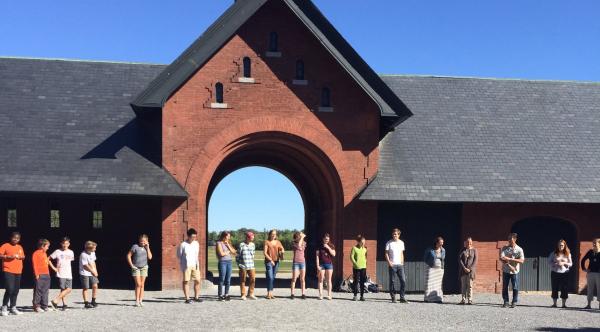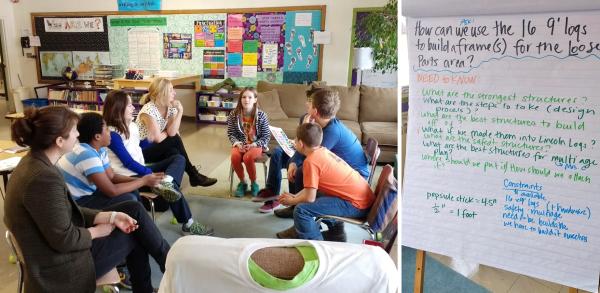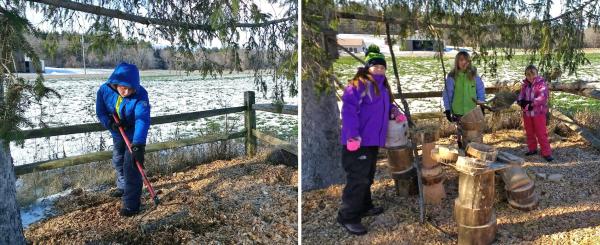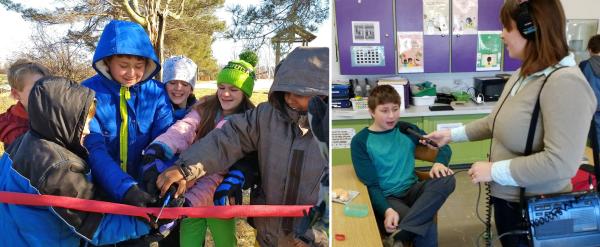Kids Build a Playground -- and a More Sustainable Community
This past September, when my students and I attended the ‘Cultivating Pathways to Sustainability’ youth conference at Shelburne Farms, I had no idea we were about to embark on what has probably been one of the most fulfilling teaching experiences of my career. I believe that the amazing, student-led project that has followed embodies education for sustainability. But it has been quite a journey to arrive here.
When I left my middle school classroom in Providence, RI six years ago, I had been integrating topics like climate change and community gardens into my literacy curriculum, but I felt isolated in my endeavor to infuse my curriculum with sustainability and environmental justice themes.
Then, as part of the Farm, I began working in the field of teacher professional development, primarily supporting teachers and schools to implement Education for Sustainability (EFS). I built my understanding of the EFS framework, learned about core pedagogical approaches, and worked alongside many amazing educators. It was incredibly inspiring. And, it made me long for the classroom again.
In the fall of 2014 I accepted a teaching position at a small, rural elementary school in Cornwall, VT. Since returning to the classroom, I’ve tinkered my way toward fully implementing EFS, asking myself, “Is this what is looks like?” or “Am I doing this right?” I joined Shelburne Farms' EFS Leadership Academy for support and inspiration. I’ve bumped against issues of values and bias in education, and I’ve felt the maddening pressure of standardized testing.
Yet in this incredibly supportive community, I’ve also found a place to let my creativity and passion flow.
The Education for Sustainability framework asserts that if we cultivate in students an understanding of the human and natural communities that they are a part of, if we help them experience interconnectedness and systems-thinking, and if we offer young people an opportunity to make a difference in their own communities, then we are developing citizens engaged in creating sustainable and democratic communities. Shelburne Farms’ Cultivating Pathways to Sustainability youth conference allowed me and my students to bring this framework to life.
As the youngest conference participants, my sixth graders were introduced to the United Nations’ 17 Goals for Sustainable Development. They got to select a goal that resonated with them, and then work with mentors to develop a project to support that goal. One of my students, remembering his days as a kindergartener, hoped to address equity on our school's playground by finding a way to bring older and younger students together in play.In years past, Cornwall’s sixth graders have played and built forts in a brushy area behind our school. Because students were out of sight of playground supervision, the tradition had recently been discontinued. A few days after the conference, my students were chatting with our principal. The students asked if they could bring back a space to build forts if it were within sight of playground staff. The principal suggested they put in a proposal to the Playground Committee and School Board. And so the project began.
Students researched, wrote, submitted, then resubmitted a proposal to the Playground Committee. Two students brought the proposal to the School Board. Once given the go-ahead, students planned a fundraiser with our P.E. teacher. Then we began to build the space.
Finally, in late December, with many generous donations from families and local businesses, our site was ready to go! VPR came for opening day, and my students were thrilled to hear themselves on the radio.The full story of the Loose Parts playground project is now told on a website we created in response to interest in our story.
And here's an article about the project from the Addison County Independent, April 3, 2017.




